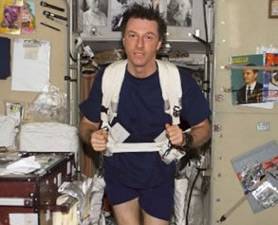
Discovery News
updated 12:04 p.m. ET May 10, 2010
Human stem cells(干细胞) grown in a rotating vessel(旋转舱) to simulate(模拟) microgravity(失重) are vastly different from those allowed to develop under normal conditions, a new study shows.
The research raises questions about the viability(生存能力) of humans traveling in space without gravity for long periods of time.
Australian scientists used a NASA-developed bioreactor(生物反应器) to grow cells from a human embryonic(胚胎的) stem cell line(干细胞系). These types of cells can develop into any of the body's three primary layers(层次) -- ectoderm(外胚层), endoderm(内胚叶) and mesoderm(中胚叶), which in turn form more than the 220 types of cells found in humans.

